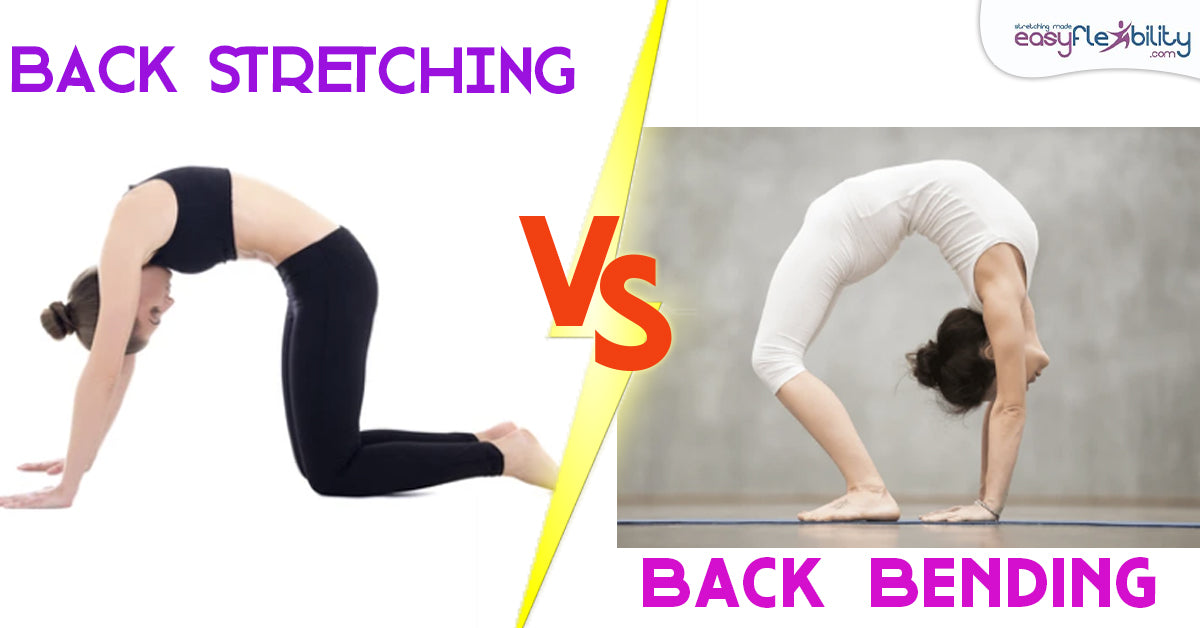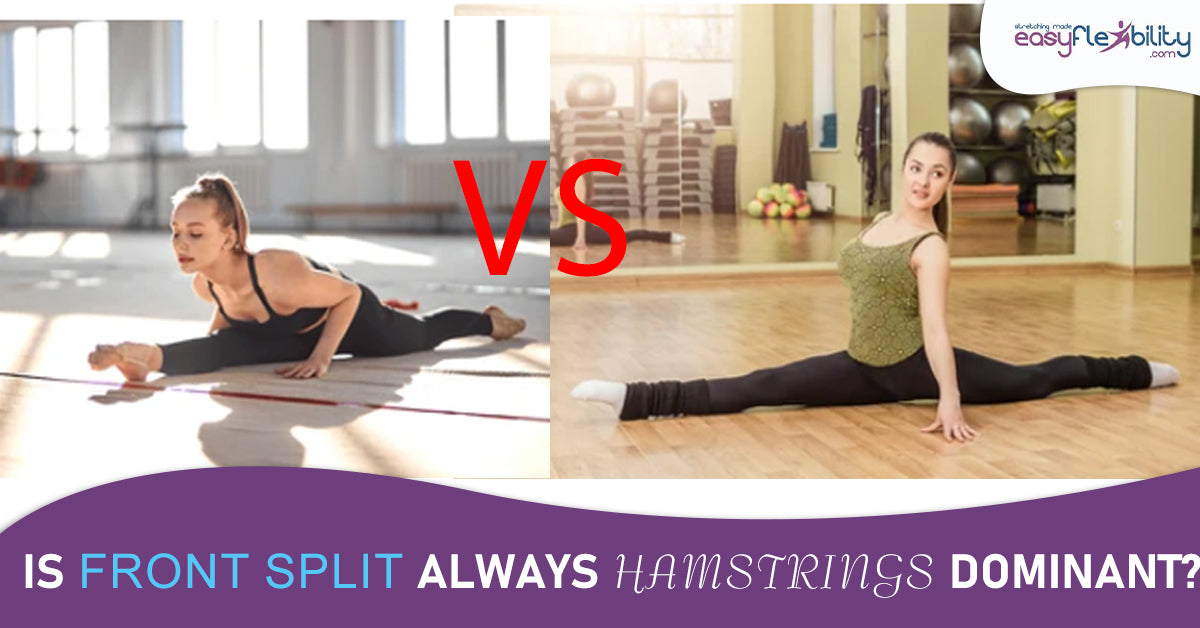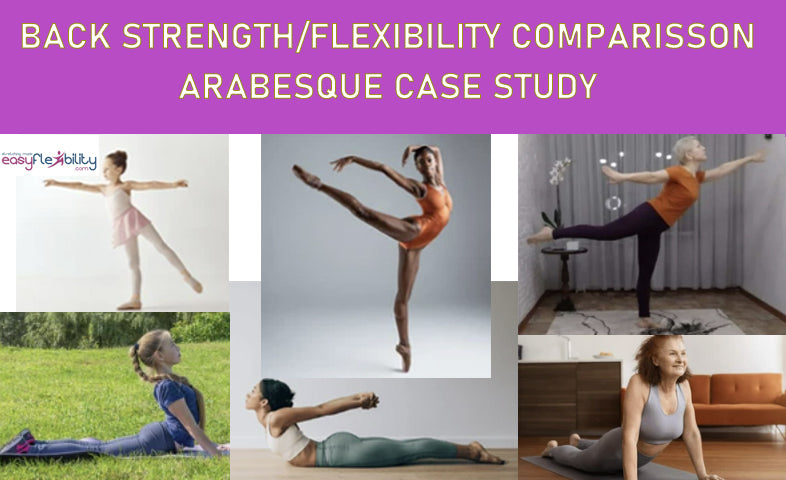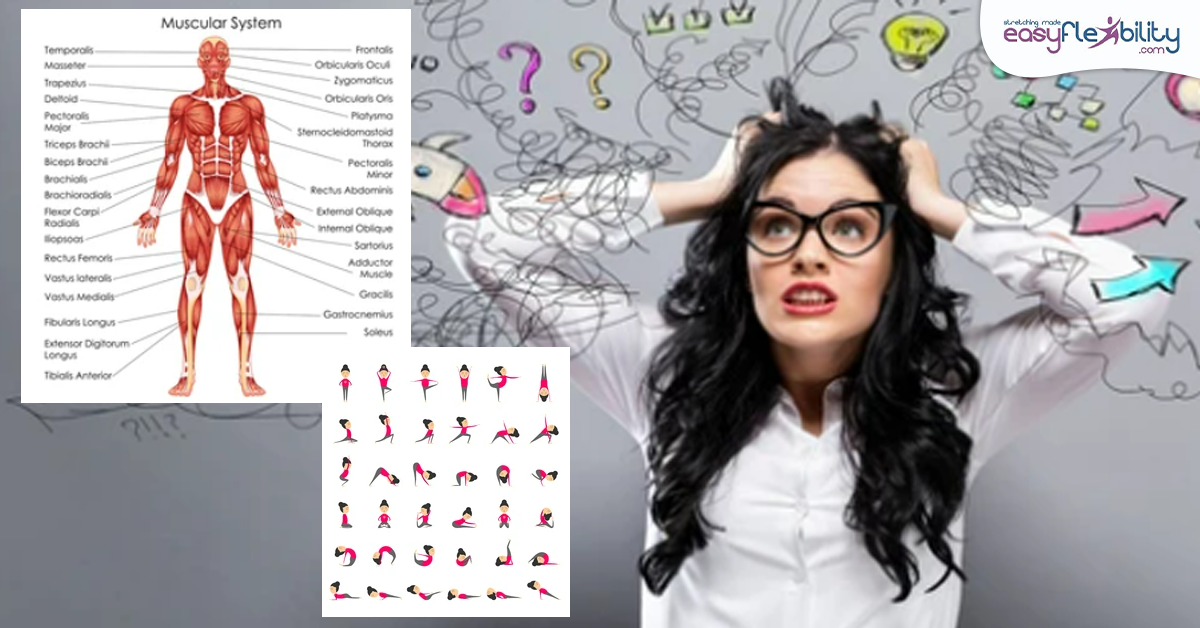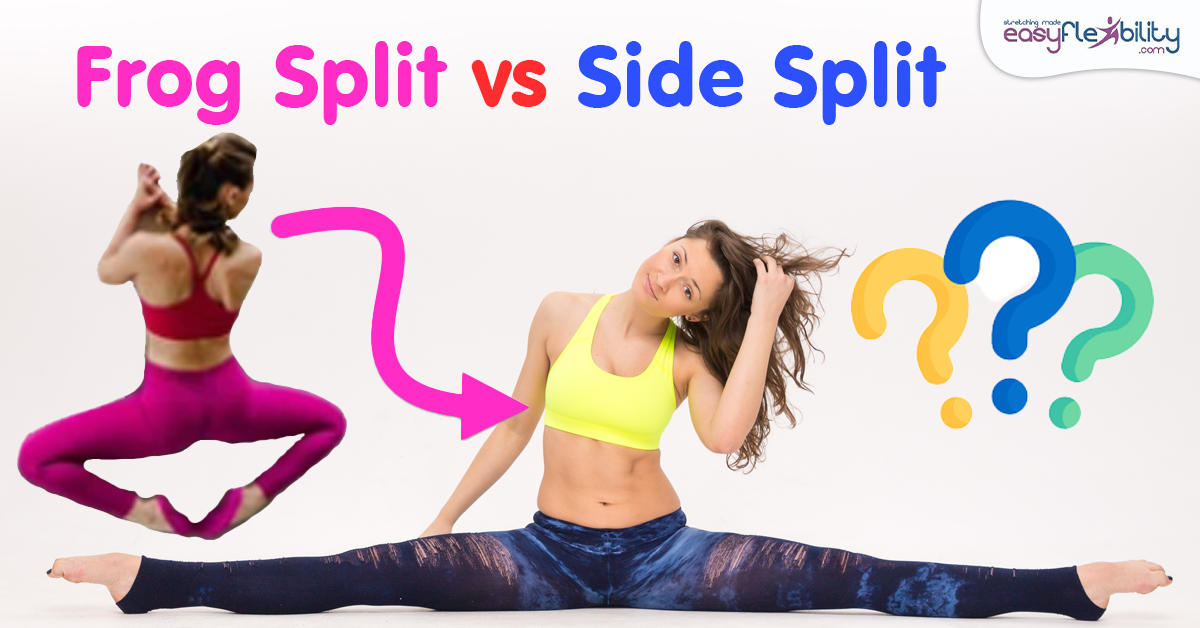Advantages of isolating muscles when stretching vs stretching multiple muscles at the same time.
Posted by Paul Zaichik on

Like many other blog posts this one comes from repeated questions that I would like to answer.
First of all, what is the difference between an isolated stretch versus non-isolated stretch?
Let's look at concrete examples: A standard lunge stretch which targets a “hip flexor” is a non-isolated stretch. When you do a lunge, whether your back knee is on the floor, or your back knee is off the floor, and you try to move your hip forward, in front of the back knee you are stretching a lot of muscles at the same time. You are stretching the 6 hip flexors the 4 adductors, and possibly even some of the abductors, some of the anterior muscle groups located on the outside of your hip. So that is 10 muscles being stretched at the same time.
If you’ve tried this stretch and were not very successful in it you can probably understand why. Because a lot of strong type muscles are stretched at the same time. Now, if you wanted to isolate each one of those, you can. You can do them one by one, and if you did that, this would be isolated stretching techniques.
“Well how do you isolate these muscles? Is that even possible?”
Of course, the big question is “Well how do you isolate these muscles? Is that even possible?”. The answer is yes. Because these muscles all do different things it’s easy to isolate. Each muscle does something different. They all flex the hip, but some also adduct, abduct, internally rotate, externally rotate, some cross the knee, some don’t. By adjusting the position of your body, you can isolate these muscles. This will make the stretching a lot easier and usually with an instant progress seen.
In the EasyFlexibility Online Training Certification Course (EFTC) we cover all major muscles. How each one works. And using the kinesiology of the muscles, how to isolate them.
Another example would be a simple over the head shoulder flexibility or anatomical flexion of the shoulder. This is where you bring your arms straight up over your head. For example, simply pulling your arm over your head, such as when hanging from a bar. Or doing a one arm pull up, is stretching all the muscles together. Let's call this a combination stretch.
Here, depending on position of the body, all these muscles get stretched at the same time: Latissimus Dorsi, Teres Major, Subscapularis, sternal part of Pectoralis Major, Pectoralis Minor, Rhomboids, even Levator scapulae, Posterior Deltoid, Infraspinatus, and Teres Minor. Some of them are movers of the shoulder joint, some of themare movers of the shoulder girdle, or the scapula, etc. And all of them are being stretched at the same time. Which makes for a very slow and inefficient progress.
Of course, all of these muscles can easily be isolated with the Zaichik Stretching Techniques. Zaichik Stretching Techniques (ZST’s) are all isolated stretches. ZST’s are not passive isolated stretches. Zaichik Stretching Techniques have Target and Leverage mechanisms. Without becoming too technical, the basic ZST modality implies that one move is the “helper”, this is your Leverage. And the other move is your Target, the direction where you want to get deeper. The helper or Leverage will move back and forth, the Target will always go deeper.
GET CERTIFIED AS AN EASYFLEXIBILITY INSTRUCTOR!
With our certifications you will be able to:
- Teach at home!
- Do one-on-one training sessions
- Do group classes
- Teach at your studio
- The possibilities are endless!
THIS CERTIFICATION COURSE INCLUDES THE FOLLOWING:
- Detailed instructions on how to teach, what to do, what not to do, how to properly put together training sessions.
- FREE PROGRAMS of your choice: Your choice of digital videos is an added bonus to obtaining this certifications. It allows for a better idea of how Zaichik Stretching Techniques are combined to form specific routines.
- Access to a Private Support Forum: Believe it or not – this is one of the most important elements of a program as it forms the right attitude towards the program. Upon registration for the course you gain an access to the private support forum, where you have a 24-hour active community to share your experience with, ask questions and seek advice.
- Getting promoted for free on our social media (more than 250 thousand followers).
- Listing in our private directory of EasyFlexibility Certified Instructors which allow you to be put on a list to be connected with potential clients that reach out to us.
- Access to our STRETCH180 APP's features for Instructors only to help with student retention.
It is a completely different story for someone who is older or someone who is very tight.
When someone is young and healthy and well warmed up, very often they get results just by doing a general over the head stretch. This doesn’t work all the time, but a young and healthy person can get flexible using regular static stretching. However, it is a completely different story for someone who is older or someone who is very tight.
Gymnasts are supposed to be very flexible. However, doing and iron cross, a muscle up, and many different power techniques that require extension, front lever being an example, make the muscles so tight that sometimes they have difficulty extending the arms overhead. While this may sound strange, I came across cases like these, and when that happens, isolating helps quite a lot. Doing ZST’s helps to bring the arms overhead and have a straight line. For example, doing handstand pushups without having a bent.
Another case where isolating makes a huge difference is if someone has an injury.
Another case where isolating makes a huge difference is if someone has an injury. I remember this one case where someone had an injury to their shoulder preventing the arm from being lifted for several months following the injury. There was a huge difference between the left and right side and ZST’s helped to focus on the tight muscles, isolate them, get good shoulder flexibility quickly and restore it to normal range of motion, where it was before the injury.
As people age, isolating the muscles and focusing on the tighter ones becomes more and more of a great tool. I remember another case where a tennis player had poor flexibility in the shoulder, and it was getting worse, to a point where it was becoming difficult to do proper serves. And in his case, it was actually the shoulder girdle that was causing the problem, not so much to shoulder joint. And when he was doing the general overhead stretch his tight muscles were not lengthening too much, but instead the loose ones were. This is what was putting pressure on the shoulder joint. To get his shoulder girdle moving, he did ZST’s specific to the Rhomboids, Levator scapulae and Pectoralis Minor. Following this program, his range of motion began to improve quickly and without pain, and playing tennis became a lot more enjoyable.
If you are interested in learning Zaichik Stretching Techniques which isolate muscles and use Target & Leverage mechanisms to stretch the muscles quickly and safely without pain then take a look at the EFTC.
As people age, isolating the muscles and focusing on the tighter ones becomes more and more of a great tool. I remember another case where a tennis player had poor flexibility in the shoulder, and it was getting worse, to a point where it was becoming difficult to do proper serves. And in his case, it was actually the shoulder girdle that was causing the problem, not so much to shoulder joint. And when he was doing the general overhead stretch his tight muscles were not lengthening too much, but instead the loose ones were. This is what was putting pressure on the shoulder joint. To get his shoulder girdle moving, he did ZST’s specific to the Rhomboids, Levator scapulae and Pectoralis Minor. Following this program, his range of motion began to improve quickly and without pain, and playing tennis became a lot more enjoyable.
If you are interested in learning Zaichik Stretching Techniques which isolate muscles and use Target & Leverage mechanisms to stretch the muscles quickly and safely without pain then take a look at the EFTC.
GET CERTIFIED AS AN EASYFLEXIBILITY INSTRUCTOR!
With our certifications you will be able to:
- Teach at home!
- Do one-on-one training sessions
- Do group classes
- Teach at your studio
- The possibilities are endless!
THIS CERTIFICATION COURSE INCLUDES THE FOLLOWING:
- Detailed instructions on how to teach, what to do, what not to do, how to properly put together training sessions.
- FREE PROGRAMS of your choice: Your choice of digital videos is an added bonus to obtaining this certifications. It allows for a better idea of how Zaichik Stretching Techniques are combined to form specific routines.
- Access to a Private Support Forum: Believe it or not – this is one of the most important elements of a program as it forms the right attitude towards the program. Upon registration for the course you gain an access to the private support forum, where you have a 24-hour active community to share your experience with, ask questions and seek advice.
- Getting promoted for free on our social media (more than 250 thousand followers).
- Listing in our private directory of EasyFlexibility Certified Instructors which allow you to be put on a list to be connected with potential clients that reach out to us.
- Access to our STRETCH180 APP's features for Instructors only to help with student retention.
© Ideas presented here are original to the Author and may not be plagiarized, copied, etc., without the written permission by the author. ElasticSteel Corp., EasyFlexibility, Paul Zaichik, et. El., 2022. No part of the materials available through ElasticSteel.com, EasyFlexiiblity.com, site may be copied, photocopied, reproduced, translated or reduced to any electronic medium or machine-readable form, in whole or in part, without prior written consent of Paul Zaichik EasyFlexibility.com, Elasticsteel.com.. Any other reproduction in any form without the permission of Paul Zaichik EasyFlexibility.com, Elasticsteel.com is prohibited. All materials contained on this site are protected by United States copyright law and may not be reproduced, distributed, transmitted, displayed, published or broadcast without the prior written permission of Paul Zaichik, EasyFlexibility.com, Elasticsteel.com.
Share this post
- 0 comment
- Tags: anatomy, easyflexibility, easyflexibility certification training, strength, stretching, time stretching, Training Flexibility, zaichik
0 comment



